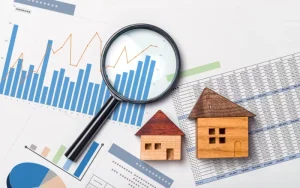
Deciding to buy commercial property is a substantial financial commitment that necessitates a thorough evaluation of numerous factors. Among these, perhaps the most critical is the location of the property. Whether you’re purchasing office space, retail space, or industrial property, the location can significantly impact your investment’s success and potential returns. In this blog post, we’ll explore why location plays a pivotal role when making the decision to buy commercial property in the commercial real estate market.
Is Location in Buying Commercial Property Important?
The location is crucial when deciding to buy commercial property as it determines its value and profitability. A prime location has the potential to attract a higher volume of customers, tenants, or clients, leading to increased rental income or sales revenue. Conversely, a poorly situated property may struggle to attract tenants or customers, resulting in lower occupancy rates and diminished returns on investment.
A commercial real estate broker plays a crucial role in this process. These seasoned professionals specialize in matching investors with properties tailored to their specific needs and goals. With a comprehensive grasp of local market dynamics, trends, and opportunities, they can identify prime locations that offer maximum potential for growth and investment returns.
Essential Factors to Consider When Deciding to Buy Commercial Property
When embarking on the journey to buy commercial property, it’s important to meticulously evaluate various key factors to guarantee the success and profitability of your investment. Let’s explore each of these essential considerations:
• Demographics and Target Market
Understanding the demographic profile of the area is critical as it directly influences the demand for your commercial property. Analyze factors such as age, income levels, household size, and lifestyle preferences to guarantee alignment with your target market. Additionally, conduct thorough market research to identify areas with demographics that match your business or tenant profile.
• Foot Traffic and Visibility
For businesses reliant on walk-in customers, foot traffic and visibility are paramount. Opt for locations with high foot traffic, such as bustling shopping districts, commercial centers, or areas with tourist attractions. Properties situated on main thoroughfares or near major intersections benefit from heightened visibility and exposure, leading to greater opportunities for customer engagement and increased sales potential.
• Accessibility and Transportation Infrastructure
Easy access to transportation infrastructure is critical for attracting customers, employees, and suppliers. Evaluate the proximity to highways, public transit routes, airports, and parking facilities when considering potential locations. Seamless connectivity enhances convenience and accessibility, contributing to the overall desirability of the property.
• Competition and Market Dynamics
Assess the competitive landscape in the area to gauge market saturation, tenant mix, and pricing dynamics. While some competition is healthy, excessive competition may lead to oversupply and downward pressure on rental rates or property values. Choose locations with a balanced competitive environment conducive to sustaining occupancy levels and rental income.
• Economic and Business Environment
Evaluate the economic fundamentals and business climate of the location to measure its potential for growth and stability. Elements such as job growth, unemployment rates, GDP growth, and industry diversification influence the demand for commercial space. Select locations with stable or growing economies and a supportive business environment to mitigate investment risks.
• Zoning and Regulatory Considerations
Navigate the local zoning regulations, land use restrictions, and permitting requirements governing commercial properties in the area. Verify that your proposed use complies with these regulations and obtain any essential permits or approvals before proceeding with the purchase. Compliance with regulatory requirements mitigates legal risks and ensures a smooth transition during property ownership.
• Future Development and Infrastructure Projects
Consider the potential impact of future development projects, infrastructure improvements, or urban revitalization initiatives on the area’s growth prospects. Monitor planned developments, transportation upgrades, and municipal investments that could enhance the desirability and accessibility of the location. Anticipating future trends and developments helps position your property for long-term appreciation and value enhancement.
• Risk Assessment and Resilience
Evaluate the risk factors associated with the location, including environmental hazards, natural disaster risks, crime rates, and geopolitical stability. Properties located in high-risk areas may face increased insurance costs, regulatory challenges, and reputational risks. Perform a comprehensive risk assessment to pinpoint potential hazards and vulnerabilities and implement risk mitigation strategies to safeguard your investment.
• Local Amenities and Infrastructure
Take into account the availability of essential amenities and infrastructure in the vicinity, such as schools, healthcare facilities, shopping centers, restaurants, and recreational areas. Access to these amenities enhances the quality of life for tenants, employees, and residents, which makes the location more attractive for commercial activities. Properties situated in areas with well-developed infrastructure and amenities tend to command higher rents and property values.
FAQs

How do you know if a commercial property is a good investment?
Determining if a commercial property is a good investment involves looking at its location, demand, potential rental income, and how much profit it can bring in. You can check its financial performance, such as how much money it makes and its return on investment. Also, consider its condition, tenants, lease terms, and if you can increase its value. Working with commercial real estate broker in Colorado and checking the property’s details can help decide if it’s a good investment.
What type of commercial property is most profitable?
The most profitable type of commercial property depends on where it is and what people need there. Retail spaces in busy areas, offices in city centers, and warehouses near transportation hubs are often profitable. But it also depends on things like lease terms, tenants, and expenses. Doing research on market trends and potential returns can help find the most profitable property type.
What are some common mistakes to avoid when buying commercial property?
Common mistakes when deciding to buy commercial property include not doing enough research, ignoring long-term changes, and not planning finances properly. It’s important to check the property’s condition, market trends, and any legal issues. Overpaying, underestimating expenses, and not having a solid plan can also lead to problems. Working with experts and being careful with every step can help avoid these mistakes.
Conclusion
The location stands as a vital aspect to consider when deciding to buy commercial property. By carefully evaluating key considerations, you can make well-informed decisions that maximize the potential of rural land, you can make well-informed decisions that maximize the potential for success and profitability in your Colorado real estate investments.
For expert guidance and support in locating the ideal commercial property, contact 3D Real Estate. With our personalized approach and extensive understanding of local market dynamics, we can assist you in making strategic investment decisions that resonate with your goals and aspirations. Get in touch with us today!




